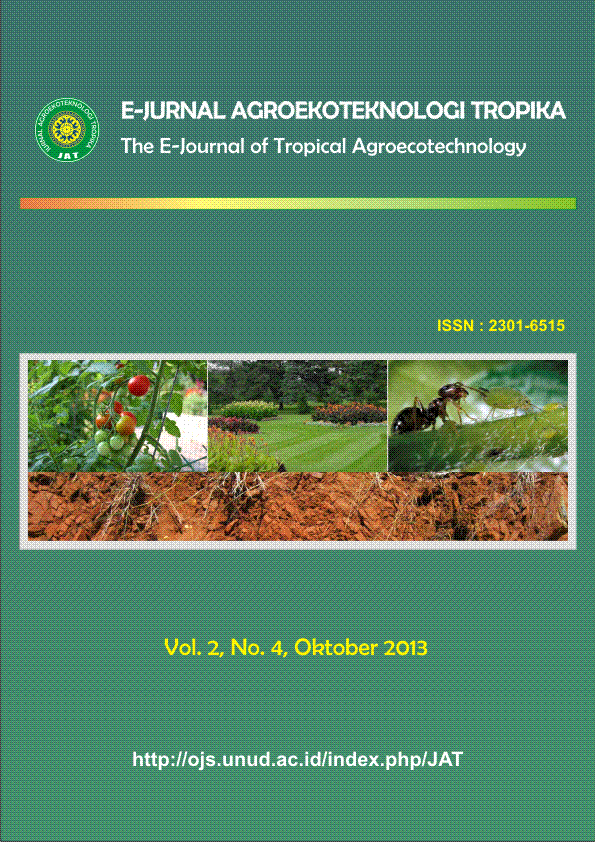Analisis Kualitas Kompos Limbah Persawahan dengan Mol Sebagai Dekomposer
Abstract
ABSTRACT
The Analysis of Compost Quality of Paddy Field Waste with Local Microorganism as a Decomposer
The aim of this research is to find out the best quality of compost made of straw material, chaff, and cow dung, with Local Microorganism as a decomposer. The research was conducted on November 2012 until January 2013, located at Gapoktan Sarwa Ada, Banjar Tebuana, Village of Taro, Sub-district of Tegalalang, Regency of Gianyar. The design used was Randomized Block Design with two factors, the first factor was combination package of paddy field waste (K) that was K1, K2, K3, K4 and K5, and the second factor was the administration of decomposer (D) consisted of without the decomposer (D0) and with Local Microorganism decomposer of stale rice with dose of 200 mL (D1). Compost quality was known by counting the total bacterial population, total fungi population, and respiration, measuring the temperature, weight, water content, the smell, structure, color, measuring the content of C-organic, N-total, the ratio of C/N, pH, and the content of salt. The result of research based on statistical analysis shows that interaction impact between combination packages of paddy field waste (K) and the administration of decomposer (D) only have real influence on the parameter of total bacterial population, C-organic and N-total of compost. The research resulting in several conclusions that is the treatment of K5D1 presenting the best quality of compost showed by the height of total bacterial population (8.95 x 108 spk g-1 of compost), the lowest content of C-organic (22.37%), highest N-total (1.76%) and fairly good C/N compost ratio (16.99). Compost pH value also shows a good result (6.49), with the content of salt in compost shows the very low value (0-2%) and the physical characteristic of best compost that is having brown blackish color, smell of soil, and crumb structure.
Key words : Local Microorganism, paddy field waste, compost quality


